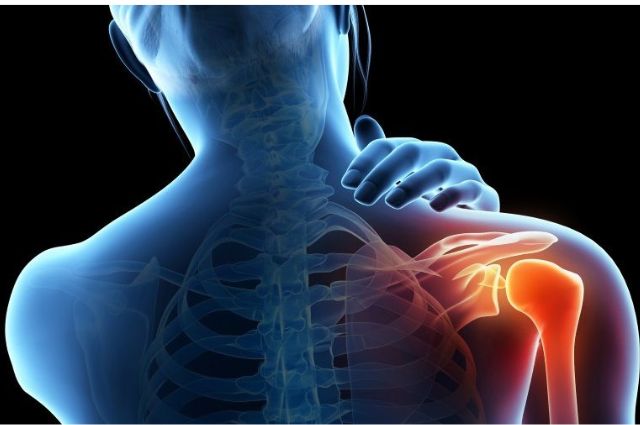Joint Pain Treatment
Joint pain treatment involves various strategies aimed at relieving discomfort, improving joint function, and addressing the underlying causes of joint pain. The specific approach to treatment depends on the type and severity of the joint pain, but common treatments include:
Medications: Over-the-counter pain relievers (such as NSAIDs) or prescription medications can help reduce pain and inflammation associated with joint conditions like arthritis.

- Physical Therapy: Physical therapists can design personalized exercise programs to strengthen muscles, improve joint flexibility, and enhance mobility. They may also use techniques like manual therapy and modalities such as ultrasound or electrical stimulation.
- Rest and Activity Modification: Resting the affected joint and avoiding activities that worsen the pain can be essential for recovery.
- Weight Management: Maintaining a healthy weight can reduce the strain on weight-bearing joints like the knees and hips.
- Injections: Corticosteroid injections can provide temporary relief from joint pain and inflammation, particularly for conditions like rheumatoid arthritis or osteoarthritis.
- Joint Aspiration: In cases of swollen and painful joints with excess fluid, a healthcare provider may perform joint aspiration to remove the fluid and relieve pressure.
- Orthotic Devices: The use of braces, splints, or orthopedic footwear can provide support, stability, and pain relief for some joint conditions.
- Lifestyle Modifications: Simple changes like proper ergonomics, maintaining good posture, and avoiding repetitive motions can help prevent joint pain.
- Assistive Devices: Canes, crutches, or mobility aids may be recommended to reduce joint stress and improve mobility in severe cases.
- Surgical Interventions: In cases of severe joint damage or when conservative treatments are ineffective, surgical procedures like joint replacement (e.g., knee or hip replacement) or arthroscopy may be necessary.
- Complementary and Alternative Therapies: Some individuals find relief from joint pain through complementary treatments such as acupuncture, chiropractic care, or dietary supplements like glucosamine and chondroitin. However, the effectiveness of these methods varies.
The treatment approach for joint pain aims to reduce pain, improve joint function, and enhance the patient’s overall quality of life. It’s essential to consult with a healthcare professional for an accurate diagnosis and a tailored treatment plan that considers the specific joint involved and the underlying condition causing the pain.